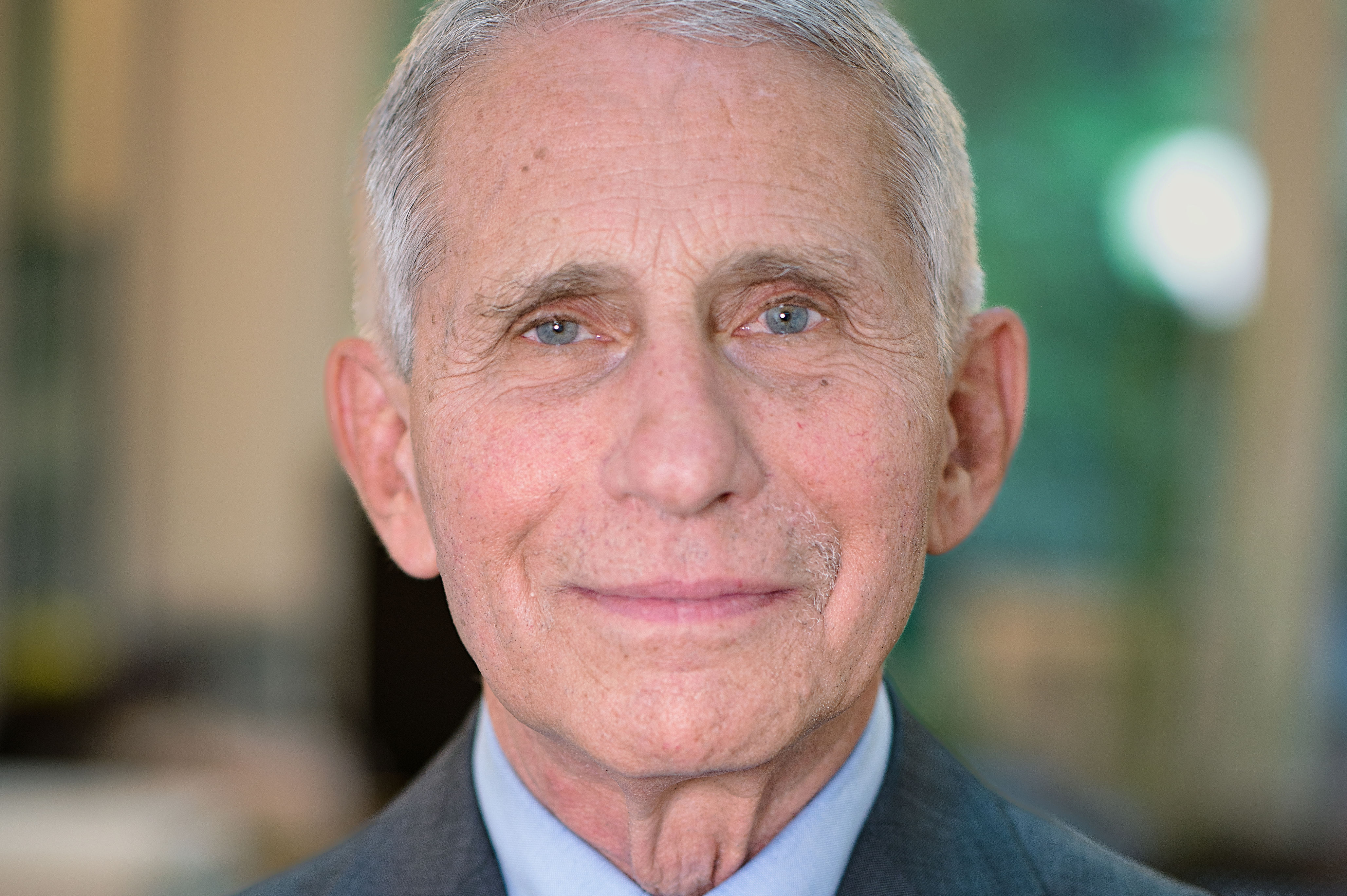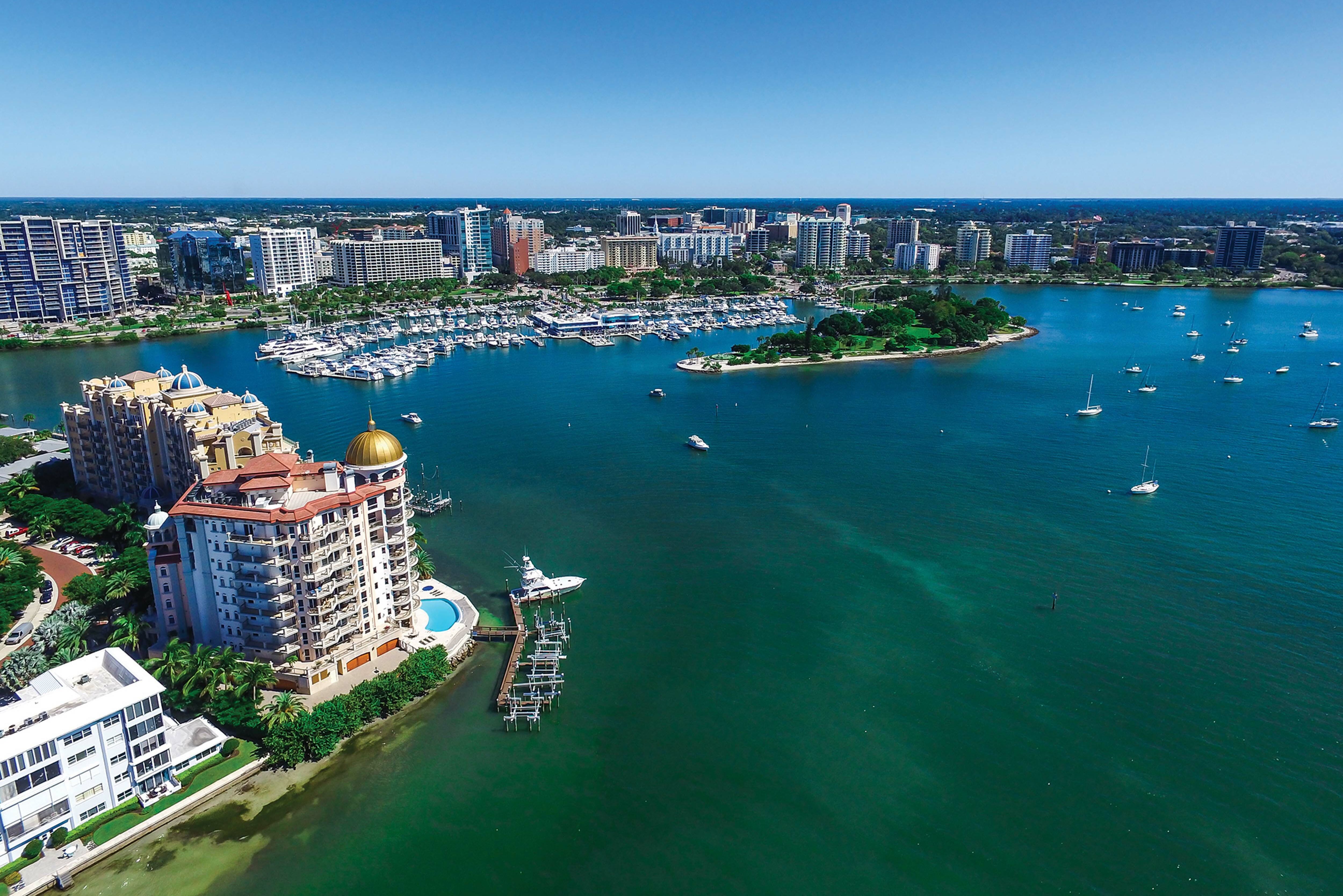Photographer James Balog Talks About Climate Change
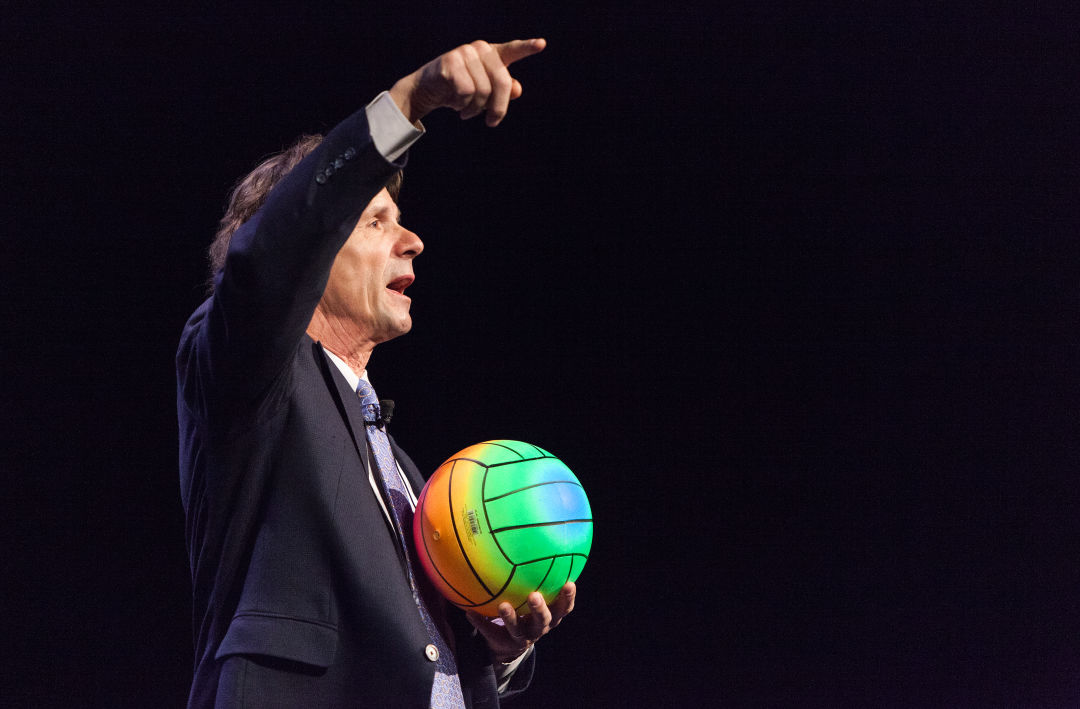
James Balog speaking at the Van Wezel Monday morning.
Image: Robert Pope Photography
Climate change skeptics may or may not have been convinced by Monday’s Ringling College Library Association Town Hall speaker, photographer James Balog, but those in the Van Wezel audience viewing some of his photographs of melting glaciers and out-of-control wildfires should certainly have plenty of food for thought.
Balog, the fourth speaker in this season’s Town Hall series, provided a few charts and stats along with his imagery, which can be both hauntingly beautiful and devastating. During his speech and at a press briefing beforehand, he addressed the issue of climate change denials.
“We need to check our belief systems at the door,” Balog said. “Look at the evidence, the factual, physical reality. Beliefs are for talking about why we are here on this earth or where we go when we died. Climate change is about empirical evidence. Yes, there is natural variation [over centuries of weather], but right now we are 40 percent outside of normal variation in the amount of carbon dioxide in the atmosphere, and no denier has an answer to that.”
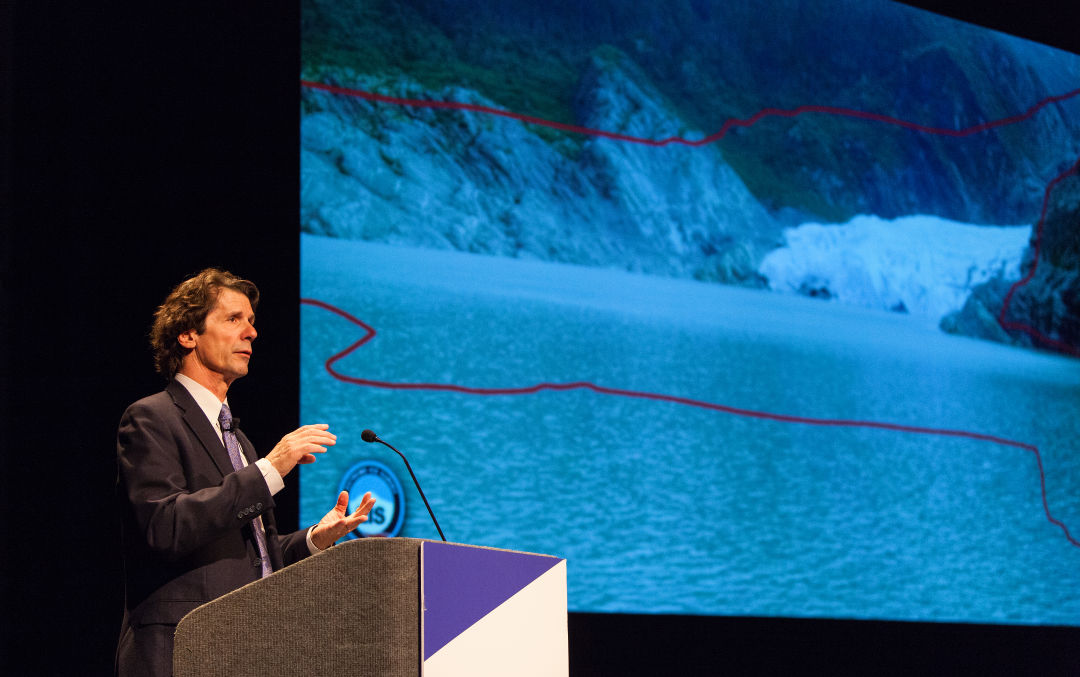
Balog demonstrating the amount a glacier he photographer has receded.
Image: Robert Pope Photography
Balog adds that it’s true the climate has sometimes over history been warmer than now, “back in the dinosaur days. But we didn’t live here then.” Humans are used to certain variations, “especially in the 10,000 years since agriculture” was established. But the kinds of dramatic events we are seeing now are well outside those norms, he says.
Asked by one reporter during the press briefing if there are ties between terrorism and climate change, Balog responded, “In the case of the Syrian civil war, a drought seven or eight years ago displaced a lot of young men from farms. So they came into the cities,” amplifying a social and structural problem that was already there. “Climate change is a threat multiplier; in this case, it may have created an opportunity” for political disruption, he said.
Balog, the founder of the Earth Vision Institute, is perhaps best known for his work in National Geographic Magazine and for the Academy Award-nominated documentary Chasing Ice, which told the story of his ongoing work revealing the shocking loss of glaciers in Alaska, Greenland and Iceland. Time-lapse images taken by cameras set in place several years ago continue to monitor the decrease in ice and the accompanying flow of waters that affects sea level in many places around the world.

Alaska's Mendenhall Glacier in 2007.
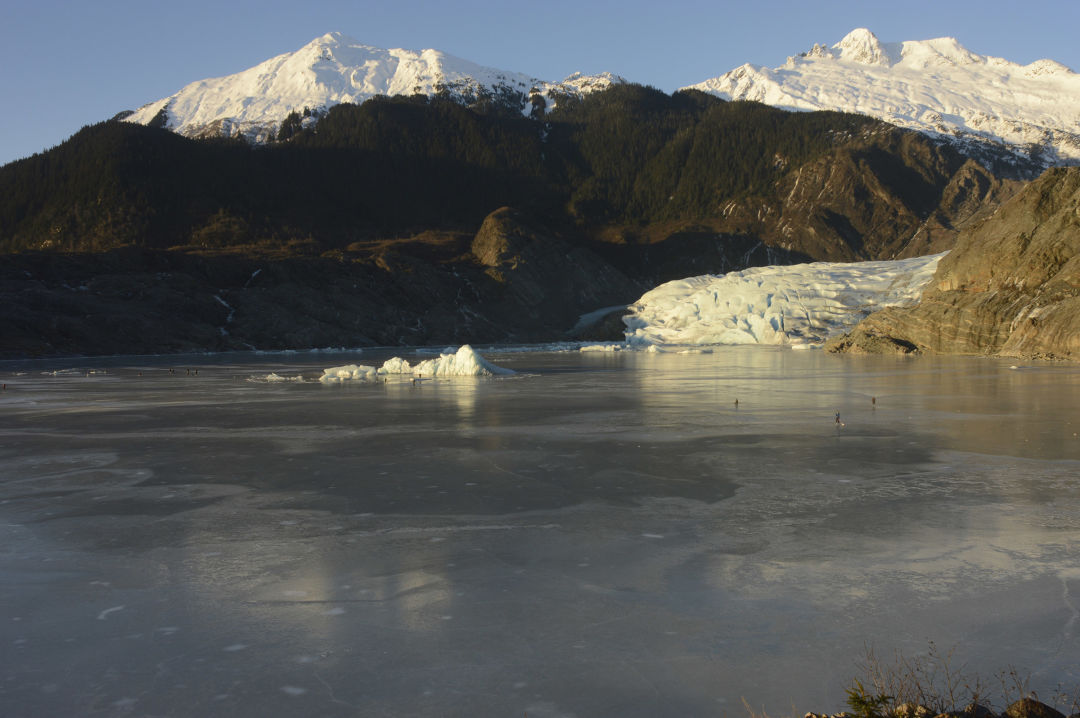
The Mendenhall Glacier in 2015.
His next movie, for which he showed a trailer, follows the path of floods and of wildfires, which are a more immediate danger to Balog personally, since he lives in Boulder, Colorado, and very nearly lost his home to one.
The photographer says that we’re part of the fossil fuel age, and that won’t completely change. But renewable energy provides opportunities for new businesses as well as slowing the rate of climate change. Right now, he says, some of the forces and people that sowed confusion about the effects of smoking cigarettes, in order to keep selling to consumers, are doing the same thing about selling oil. A carbon tax is an idea he believes those on both sides of the political divide can agree on.
In the meantime, Balog, who was once a skeptic about this issue himself, says he will keep documenting the changes taking place in our environment. “I don’t want to get to be an old man in a rocking chair and have my two daughters say to me, ‘Dad, what did you do?,’” he says. “I want to use my voice to help others to use their voices.”
